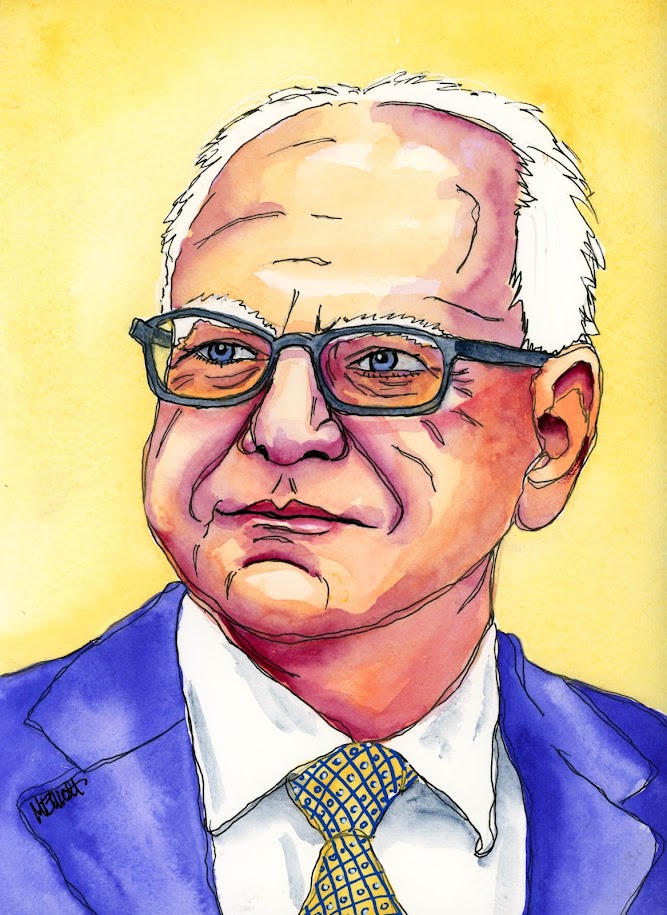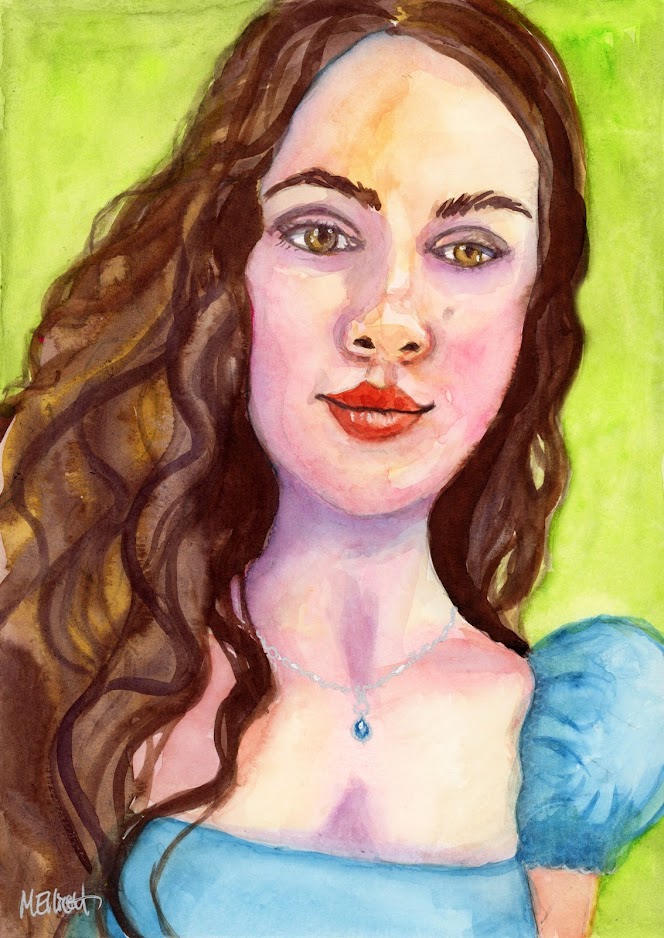18 December 2024
Roseville collection
30 November 2024
She Can Fly!
17 November 2024
Pucker up
 |
| Laurie's final painting |
06 November 2024
Before the Deluge
03 November 2024
Revenge Art
12 October 2024
A new still life
08 October 2024
Goofing off
I decided to do it.
22 September 2024
The original in this palette
21 September 2024
Similar subject, new palette
11 September 2024
A break? or...
29 August 2024
Flapper anguish
18 August 2024
Partner painting
11 August 2024
Iconic women
04 August 2024
Villains
02 August 2024
Another mug shot
01 August 2024
More criminals
"CinCin"—9x12 inches on Fabriano paper, materials listed above.
31 July 2024
Nostalgia
29 July 2024
Inspiration combo
28 July 2024
Angles
Our Let's Face It 2024 assignment for last week was painting someone from a difficult angle. The teacher used a different reference photo, and painted something very colorful in oils; I chose to steal a reference photo from another student who, like me, wanted to do her own thing, and paint it in watercolor in an almost monochromatic way, using only yellows and browns with a bit of pink and purple thrown in as accent. I actually washed the entire page first with Naples Yellow, blotting off a few highlights and the whites of the eyes, so it would have a unifying color.
This was a tough one to paint, and I overworked the chin and under-chin area to the point where my paper (some Fabriano I am trying out) started to fray! I captured a fair likeness otherwise, but that chin-to-neck transition still bothers me.
This is 9x12 inches, using my Paul Jackson watercolors on Fabriano 140-lb. 25% cotton paper. I called it "Up Your Nose."
18 July 2024
A redhead and her best friend
03 July 2024
Venting
Marking time
I haven't felt too inspired lately, so I've been marking time by picking up on the projects of others and redoing them to suit myself. They haven't completely done that, but at least they have kept my hand in. This girl was a portrait that someone published on a Facebook page, asking for help with the likeness (a person new to portraits) and I decided that she was sufficiently arresting that I wanted to paint her myself.
05 June 2024
Departure
02 June 2024
Canine Cutie
27 May 2024
Quick Regency portrait
17 May 2024
Mixed media muddle
02 May 2024
El Naddaha
El Naddaha, "the caller," is a siren that haunts the Nile in Egypt. She is described as a tall, slender, beautiful woman with white—some say transparent—skin and long flowing hair. She calls to a man by his name in her soft, sweet, hypnotic voice, and lures him to his doom in the river. No man called by her can resist, and none survive their encounter.
I found a reference photo I loved for both its color and ambiance and also its interesting angle/perspective, and have been wanting to paint this for awhile, as a sort of companion piece to my "Nereid" portrait. Both the mood and the story are a bit darker than that one; I used similar colors for the background, but layered them more richly and did a finishing glaze of thin lime green to unite the entire picture—background, hair, and skin—to maximize the impression that she is submerged in water except for her face. This was one of those backgrounds that I was initially loathe to paint over, because I really liked how it turned out; but you have to sacrifice one thing sometimes to achieve another.
I'm not entirely satisfied with the white parts around her neck and chest that are supposed to signify a slight disturbance in the light on the water, but after reworking them several times, I decided to let them be. Perhaps I will revisit in a few days, when I can look at it more objectively.
When I initially saw the photo I thought of Ophelia of Shakespeare fame, but didn't like the passive nature of her story, so I looked for another with which to identify my portrait and found the ominous Egyptian legend recounted above.
The "Caller" is acrylic, with layered stencils for the background, on thin birch board, and is 16x12 inches.
05 April 2024
LFI assignment...
31 March 2024
Beautiful substrates
The definition of a substrate in art is "a foundational or base material on which another material is applied or mounted." But the definition in biology is what I like to think of when creating one: "The surface or material on or from which an organism lives, grows, or obtains its nourishment." In other words, applying that one to art means that your figure in the forefront is growing organically from out of its background.
My mentor for creating substrates was and probably always will be Emma Petitt. She is the one who taught me to use a roller to apply random strokes of a variety of color to my ground, allowing them to cover, reveal, or blend with one another to create something special; and then, over the top of that (which can be plenty all by itself) I also discovered the joys of applying stencil images to highlight colors, shapes, and styles in service of the image I intend to paint over them.
I haven't done one of these in a while, being content instead to use more stark, one-color grounds in order to focus all the attention on the figure. But in some cases the rich background "grows" the figure from within it, and I'm hoping that's the impression this portrait ends up giving.
I call it "Nereid," which in Greek mythology is a kind of nymph, a female spirit of sea waters. In this one she has just burst from the water and is shaking her head, scattering drops everywhere as she sheds the excess.
I had some tough decisions to make on this one. I am not experienced in painting water, so although I initially considered painting a pool around the lower part of her, I was sufficiently in love with my substrate in order not to want to mess it up with something that might not look as realistic as I would have liked; I will practice that on some other painting without as much invested. I also couldn't decide, initially, whether I should paint her in much paler shades of white and cream with bluish/greenish highlights, like a fish that emerged from the deep. But I ultimately decided that nereids probably spend a bit of time in shallow waters or preening on rocks like the Little Mermaid, so I kept her in mostly realistic tones.
The light was interesting in this one, because it was sort of top down from right to left, so she has highlights and darks on both sides of her body. The perspective was also a challenge, with that upturned chin and nose, hidden forehead, and weirdly angled ear. Finally, I think i reworked that hand about five times, having trouble getting all the fingers the correct lengths and shapes and applying the highlights correctly. But I'm done...I think!
"Nereid"—pencil, acrylics, and stenciling on thin birch board, 12x16 inches.
11 March 2024
More in the theme
I enjoyed playing with a new tool to get her hair just right: I had ordered some plastic scrapers meant to be used with Gelli plates that one of my Let's Face It teachers had recommended for making stripes or patterns in oil paint, and I used one of them to "scumble" the colors together and put some texture into her soft cloud of hair.

















































